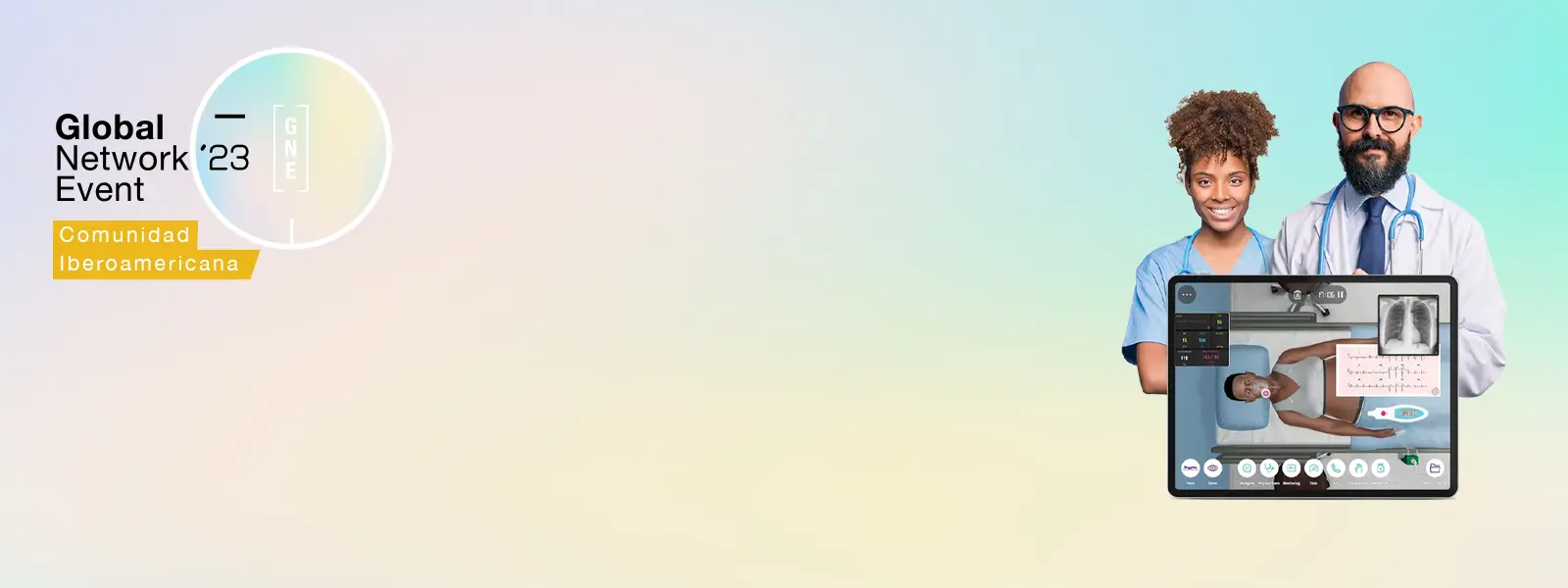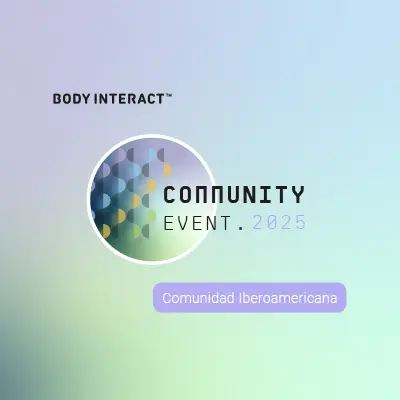Global Network Event - Annual event on Virtual Patients for the Iberoamerican Community (Part III)
The final post on the Iberoamerican Community Global Network Event is finally out!
The 15th of November of 2023 held this amazing event that counted on the expertise of Professors from the Iberoamerican community of users.
Don’t miss the opportunity to hear the insights and experiences regarding the implementation of Body Interact Virtual Patients for teaching and learning in healthcare based curricula.
Speakers Presentations

Beatriz Martinez
PhD
Is it possible to work with Virtual Patients in Physiotherapy?
Professor Beatriz Martinez has been a physiotherapy professor at the University Europea since 2006. She is the Director at the Sport Sciences and Physiotherapy School, an activity that she combines with teaching, research and clinic. She has taught undergraduate and graduate classes for the last 15 years in her field of expertise: physiotherapy linked to women´s health. She is a member of a research group in psychophysiology and her focus research is women´s health and higher education.
The teaching context in Universidad Europea has a great deal of input of simulated environments. This is one of the University bets, so that before moving into real clinical settings students get the skills and confidence necessary to perform their clinical roles.
This is a reality for any healthcare based curriculum – physiotherapy, medicine, nursing, etc.
Physiotherapists work mainly with their hands, so the question was: What can we do with a digital simulator?
Currently, Body Interact has available many cases developed for physiotherapy curricula, with relevant and interesting pathologies for this area:

So, what opportunities does Body Interact provide for exploration and development in this type of scenario?
- Explore gait, kinetic coordination
- Explore passive and active movements
- Explore reflexes
- Provide house treatment
- Provide assistance to babies
- Contact with patients of different cultures
Professor Beatriz highlighted the outcomes of a qualitative study carried out in the University the past year regarding the feedback from the physiotherapy professors on the usage of Body Interact Virtual Patients:
- A big part of the success is dependent on teacher planning and preparing ahead of time
- It allows to develop transversal skills such as clinical reasoning and decision-making
- Increases motivation in the student
- Increases students autonomy

Other points mentioned by Professor Beatriz Martínez regarding their experience at the Universidad Europea with Body Interact are:
- It promotes collaborative work in class
- It promotes not only student motivation but also participation
- It provides the opportunity to make contact with patients that otherwise are not common in their clinical practice
- Puts the students out of the comfort zone

Ana Pinto de Oliveira
MD, PhD Student
How Body Interact Virtual Patients are used with Problem-based Learning methodology
Professor Ana Pinto de Oliveira has been teaching for the past 20 years. She is a doctor specialized in Public Health and is currently studying for a PhD in International Health, with a focus on the health of vulnerable groups.
The University of Algarve Medical curriculum has a very strong component of Problem-Based Learning (PBL). PBL is a method centered on practical and active learning. The aim of such methodology is to investigate and to look for real-world problems solving.
In the case of Professor Ana Oliveira and her colleagues’ classes the PBL ratio is around 1 professor to 6/7 students.
Professor Ana Oliveira mentioned that the introduction of Body Interact Virtual Patients in PBL sessions was made with great enthusiasm.
But how does this integration work?
- The case is used with the professor interaction, role playing as if he was the patient.
- The professor pauses the case as much as needed, so that the students have the opportunity to discuss the next steps of the case, and also providing the possibility for the professor to ask some questions.
- Students are stimulated to define diagnosis hypothesis and only after this step they can ask for complementary exams.
- All actions determined by the students must be explained and justified.

Alváro Priale Z.
MD
Is it possible to teach how to make decisions?
Professor Alváro Priale Z is responsible for the Clinical Simulation Department at the University Científica del Sur, en Peru, since 2015. He has a long experience in clinical simulation, having done many relevant training in this field. As a doctor his area of expertise is Pediatrics.

As Professor Priale mentioned that before any decision-making comes a reasoning process, and in Medicine it is a Clinical Reasoning process. And usually, this clinical reasoning development is not formally defined in the curriculum, but is implicit in the clinical practice.
Clinical reasoning can be looked into by the dual process theory, that suggests that decisions are made in two subsequent systems: one intuitive and the second analytic.
Professor Priale, in his presentation, recommends searching for strategies to minimize reasoning errors.
Some of those strategies can be:
- Reflexive practice / Metacognition
- Will to observe and improve individual practice
- Will to set aside hierarchies and prejudice
- Be critically curious and have mental openness
- Develop tolerance to uncertainty and failures
- Count on a environment in which mistakes are not punished
Regarding this last strategy, simulation, namely virtual patients, can be the way to move forward, as it has certain features aligned to provide a safe teaching-learning environment: providing clinical scenarios at different complexity levels with realism, promoting the development of clinical reasoning and communication, and providing the opportunity to look into clinical errors with no harm to patients.
Professor Priale ended his presentation providing some highlights on a paper to be published regarding the impact of virtual patients in clinical reasoning in medical students, in which one of the outcomes that was possible to identify was the considerable reduction in the diagnosis errors in students that had undergone a training based in Virtual Patients.
Conclusion
In conclusion, the Iberoamerican Community Global Network 2023 Event, was a resounding success, bringing together a wealth of knowledge and expertise from Professors within the Iberoamerican community of users.
Throughout the event, the presenters shared invaluable insights and experiences related to the implementation of Body Interact Virtual Patients in healthcare-based curricula.
In the spirit of continuous learning and collaboration, we encourage all attendees and readers to further explore and apply the knowledge gained. The exchange of ideas and experiences showcased at the event serves as a catalyst for enhancing healthcare education globally.








